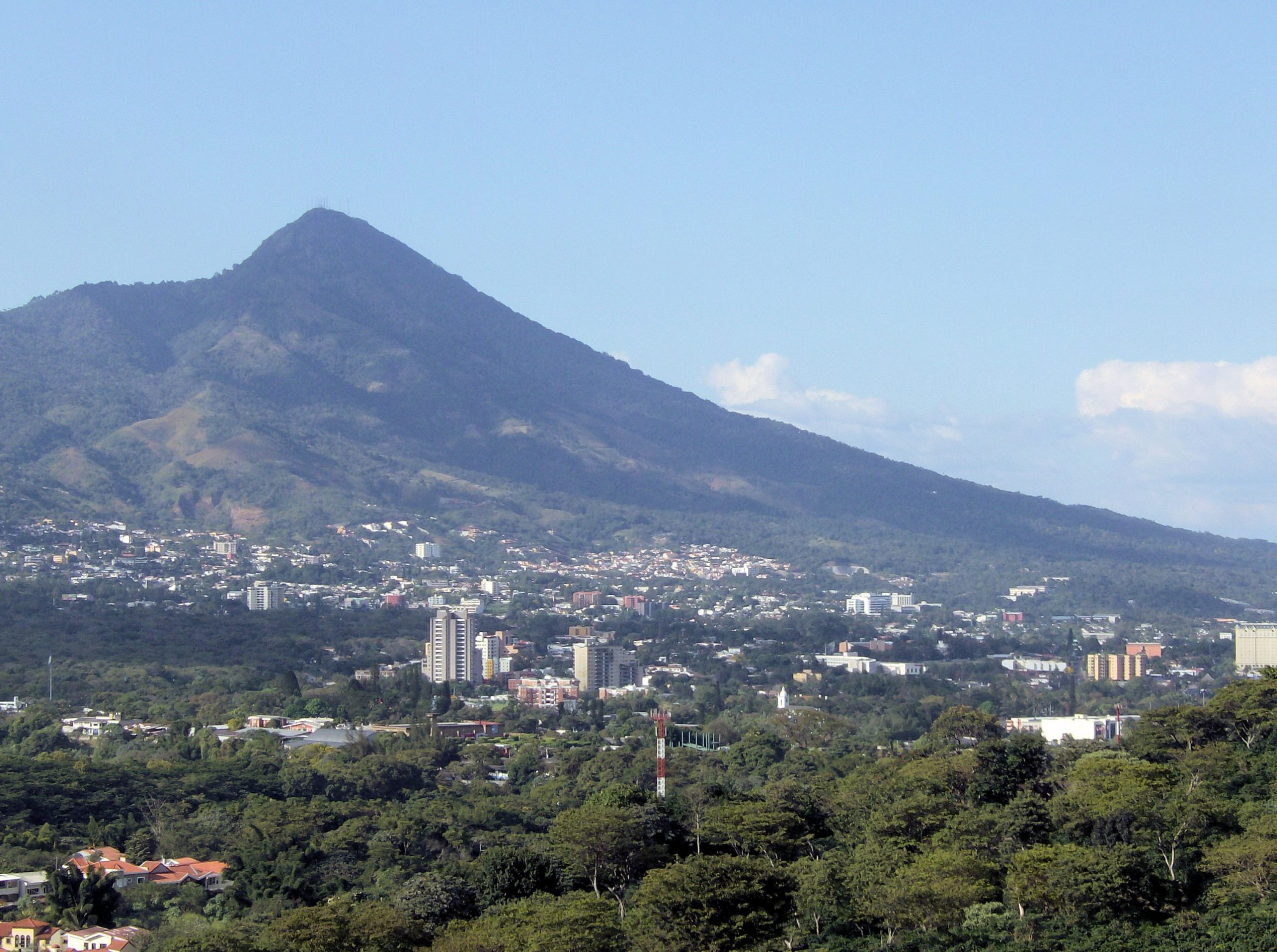San Salvador
San Salvador, the capital of El Salvador, has a rich and tumultuous history. Founded in 1525 by the Spanish, it quickly became a center of colonial administration and trade. Throughout its history, the city has been at the heart of significant political and social upheavals, including the country's independence from Spain in 1821, the Salvadoran Civil War (1979-1992) which cost about 75,000 lives, and the rampant gang violence during the past two decades. Despite the challenges, San Salvador has remained the cultural and political hub of the nation, continuously evolving and adapting to its changing socio-political landscape.
Growth and Demographics
El Salvador is the smallest and most densely populated country in Central America with about 6.3 million inhabitants. The wider metropolitan area of San Salvador is home to approximately 2.4 million people, making it the most populous urban area in El Salvador. The city is a vibrant mix of cultures, driven by its diverse population, mostly mestizo residents, but also including indigenous Nahual-Pipil communities and immigrants. Over the years, rural-to-urban migration has significantly increased, with many seeking better employment opportunities and access to services in the capital. The population is predominantly young, with a median age of 27, creating a dynamic and energetic urban environment. However, the city's infrastructure and services continue to face significant pressure.

Economy
As the economic engine of El Salvador, San Salvador generates over 50% of the country's GDP. The city is a hub for commerce, industry, and finance, with key sectors including textiles, food production, telecommunications, and financial services. Remittances from Salvadorians who live abroad are the second largest source of external income after exports, significantly bolstering the local economy, and accounting for over 20% of GDP. The economy has been growing by over 2.5% annually in recent years. Despite these strengths, income inequality is stark, with 27.5% of the population living in poverty, among the highest rates in Latin America.

Social Challenges
San Salvador faces numerous social challenges rooted in decades of political instability, poverty, and violence, which have posed major obstacles to sustainable development and social cohesion. Over time, the country has oscillated between lenient approaches and hardline 'mano dura' anti-crime policies. Currently, the government has adopted a strict law-and-order stance, marked by an ongoing state of emergency aimed at curbing gang violence. While this approach has reduced crime, it has also significantly eroded civil liberties.
The State of Exception with Tens of Thousands of Abandoned Children
For many years, the country grappled with high crime rates, primarily fueled by gang violence, which reached a peak in 2015 with 106 homicides per 100,000 people, making it one of the most dangerous countries in the world. Gangs controlled many neighborhoods, spreading fear and insecurity, particularly in marginalized areas. In March 2022, President Nayib Bukele's government implemented a state of exception, granting sweeping powers to the police and military, resulting in a brutal crackdown and the incarceration of over 81,000 gang members and affiliates, including thousands of minors and innocents. This aggressive approach has significantly reduced homicides, which dropped to a historic low of 2.4 per 100,000 people in 2023, transforming El Salvador into one of the safest countries in the region. However, these gains in security have come at the cost of civil liberties, with thousands of arbitrary detentions, reports of torture, and human rights violations. The country now holds the highest per capita incarceration rate globally, as Salvadorans weigh the trade-off between security and freedom. Furthermore, at least 62,000 children and adolescents of those deprived of liberty have been left unattended or abandoned, with many families losing their sole economic support in the crackdown on crime, raising concerns about future social instability.
Poverty and Inequality
El Salvador, one of the most urbanized countries in the Americas, is grappling with significant urban poverty. The United Nations Development Programme (UNDP) reports that more than two million Salvadorans, roughly one-third of the population, reside in precarious urban settlements. Nearly 30% of those living in Greater San Salvador, reside in informal settlements that often lack essential services such as clean water, sanitation, and healthcare. The contrast between affluent neighborhoods and impoverished communities is striking, making the reduction of socio-economic disparities one of the city's most urgent challenges. Nationwide, approximately 1.8 million Salvadorans live in poverty, unable to meet their basic food needs. Additionally, 40% of the population (about 2.5 million people) is vulnerable, earning only between $6.85 and $14 per day. Unemployment and underemployment remain major issues, particularly among the city's youth. Although some progress has been made, about 24% of young people (ages 15-24) are not engaged in employment, education, or training—a figure that remains higher than the regional average.
Migration
Salvadorans fled during the 1979 to 1992 civil war mainly to the United States but also to Canada and to neighboring Mexico, Guatemala, Honduras, Nicaragua, and Costa Rica. Emigration to the United States increased again in the 1990s and 2000s as a result of deteriorating economic conditions, natural disasters (Hurricane Mitch in 1998 and earthquakes in 2001), and family reunification. In the last decade, many fled because of gang violence and lack of economic opportunities. Today, at least 20% of El Salvador's population lives abroad. While outward migration is slowing down, the country still has a negative net migration rate. In terms of the city of San Salvador, the city continues to receive internal migrants from rural areas, straining its limited resources. This influx is straining the informal settlements on the city’s periphery, where living conditions are precarious, and access to services is limited.
Religious and Spiritual Landscape
While El Salvador remains deeply religious with the Catholic Church as the state religion, evangelical Christianity has experienced significant growth over recent decades, overtaking the Catholic population for the first time. A 2020 CID Gallup poll shows that 44% of Salvadorans identify as evangelicals, surpassing the 38% who identify as Roman Catholics. This shift represents a 17% loss of followers for the Catholic Church in just one generation. Although the Catholic Church continues to play an important role, evangelical churches are becoming increasingly influential in Salvadoran society. Despite the remarkable growth of churches, many of the persistent challenges within the country remain unresolved. The response from evangelical churches in El Salvador has varied and largely proved ineffective in driving social change. While many churches continue to grow in numbers, there is a noticeable lack of practical engagement with their communities, with a predominant focus on spiritual matters alone. Frequently, due to an insufficient understanding of how to effectively address community needs, or because of fear, complacency, or political alignments, these churches have opted for silence or even complicity in the face of socio-political challenges, withdrawing into their religious enclaves.

Engage in San Salvador with Us
Join us in partnering with local communities, ministries, and urban leaders to address urban challenges. We support a variety of community-driven initiatives and leadership training programs aimed at improving living conditions, fostering social cohesion, and promoting spiritual transformation.
Our Partners in San Salvador
La misión de Casa Semilla es fortalecer la Iglesia Cristiana en El Salvador promoviendo un enfoque holístico de la misión que abarque tanto los aspectos...
For many years Iglesia Misionera Bautista Eben-Ezer in San Salvador has been a pillar of support in one of San Salvador's most violent communities....
Por muchos años, la Iglesia Misionera Bautista Eben-Ezer en San Salvador ha sido un pilar de apoyo en una de las comunidades más violentas de...
